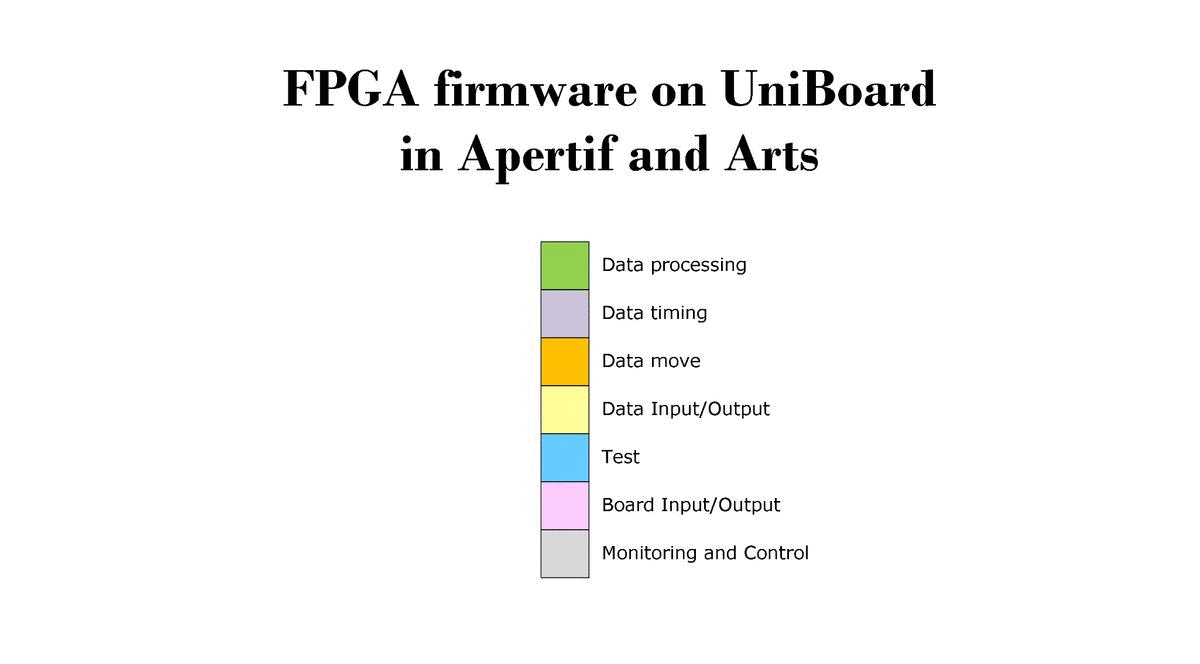Daily Image
15-05-2019FPGA firmware in Apertif and Arts
| Submitter: | Eric Kooistra |
| Description: | The daily image loops through the block diagram of the FPGA firmware that runs on the UniBoards in Apertif. The green blocks indicate the digital signal processing functions. From this detailed block diagram it becomes clear that in fact many more functions are needed to implement the signal processing of Apertif. In summary these functions take care that the data is processed at the right place, in the right order and at the right time. The total input data rate at the 1536 analogue-to-digital converters of Apertif is almost 10 Tbps. The Apertif beamformer makes 40 compound beams and therefore the data rate from the 12 dishes to the central processing is 3.456 Tbps. Thanks to the integration over one second the output of the Apertif correlator is reduced to about 19 Gbps, so about a factor 500 less than at the inputs. This is why for Apertif imaging a single workstation called Data Writer can ingress the visibility data from the correlator. The Arts tied array beamformer uses the same FPGA firmware at the dishes, but other firmware at the central processing. Arts forms 12 tied array beams per compound beam. The tied array beam data is output as full Stokes I,Q,U,V data that is integrated over 81.92 us. Therefore the full Stokes output rate of the tied array beam data in Arts is as much as 288 Gbps. This is why Arts needs a big GPU cluster with 40 workstations (one workstation per compound beam) to search the tied array beam data for transients. In total there are 96 UniBoards at the dishes and 16 UniBoards at the central building. Each UniBoard has 8 FPGAs, so in total there are about 900 FPGAs working hard to help make Apertif and Arts happen. |
| Copyright: | ASTRON |
| Tweet |  |
